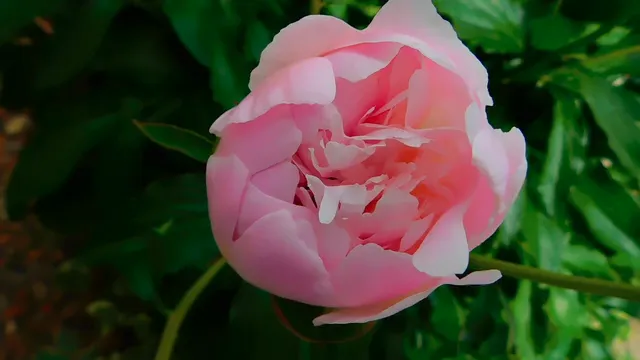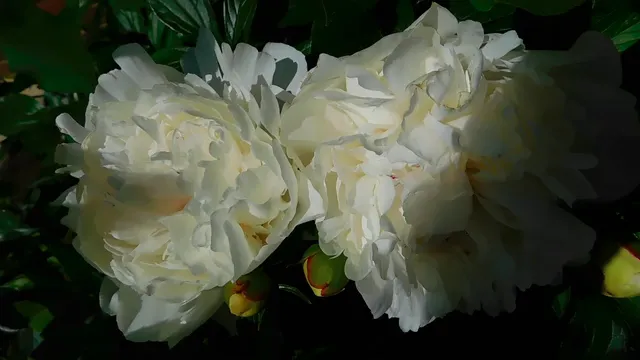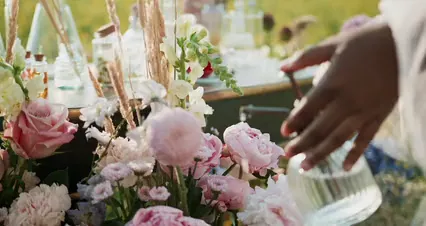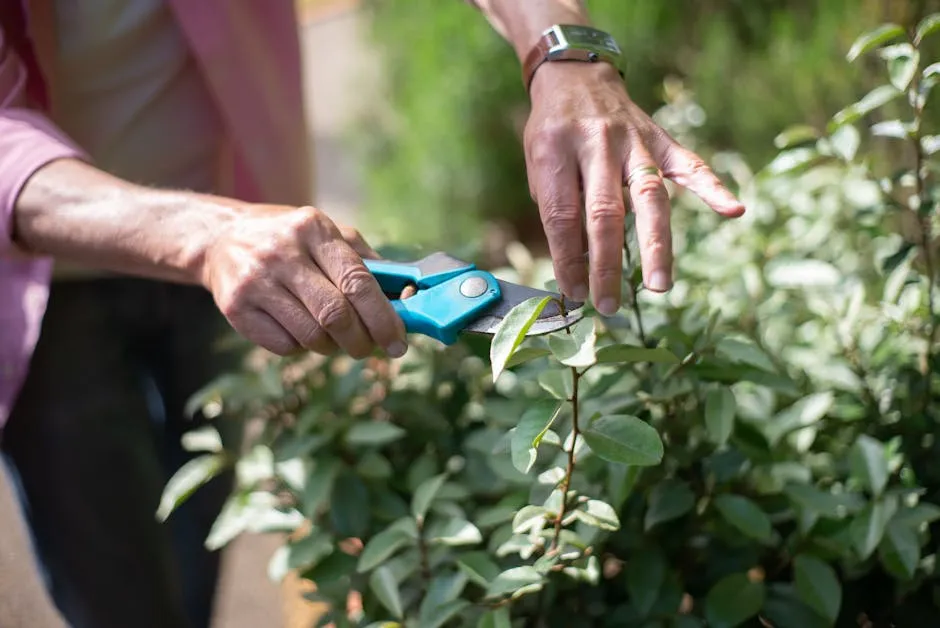

The Ultimate Guide to Double Peony Plants: Everything You Need to Know
Introduction
Double peony plants are truly captivating. Their lush, full blooms bring a touch of elegance to any garden. These flowers are favorites for both garden displays and floral arrangements. In this article, we’ll discuss what double peonies are, their care, and how to incorporate them into your landscape.
And speaking of elegance, if you want to add some charm to your garden, consider the Peony ‘Adolphe Rousseau’. This classic variety features large, rich pink blooms and a strong fragrance, adding elegance to any garden. Trust me, your neighbors will be green with envy!
Summary and Overview
Double peonies are remarkable flowers known for their many layers of petals. Unlike single peonies, these blooms offer a fuller appearance and a delightful fragrance. They typically bloom from late spring to early summer, adding vibrant colors to gardens.
Caring for double peonies involves ensuring they have well-drained soil and adequate sunlight. They thrive in a variety of colors, including pink, red, white, and yellow. These plants are not just beautiful; they are also popular choices for landscaping and floral designs, making them a valuable addition to any garden.

Varieties of Double Peonies
Double peonies come in various stunning varieties, each with unique traits. Here are a few popular choices that can brighten your garden:
Peony ‘Adolphe Rousseau’
This classic variety features large, rich pink blooms. With a strong fragrance, it adds elegance to any garden. Its petals are densely packed, creating a beautiful, lush appearance.
Peony ‘Albert Crousse’
Known for its soft, blush-pink flowers, ‘Albert Crousse’ exudes charm. The blooms open gracefully, revealing layers of petals. Its subtle scent makes it a favorite in floral arrangements. You can find this beauty here: Peony ‘Albert Crousse’.
Peony ‘Angel Cheeks’
With its delicate, pastel pink hues, ‘Angel Cheeks’ is a vision of beauty. This variety has a slightly more airy structure, offering a romantic feel. Its blooms are perfect for a whimsical garden look. If you want to add this charm to your collection, check out the Peony ‘Angel Cheeks’.
Each of these varieties brings something special to the table. Whether you’re drawn to their colors or fragrances, double peonies can transform your outdoor space into a floral paradise.

Growing Double Peonies
Ideal Growing Conditions
To thrive, double peonies need well-drained soil. They prefer full sun, so choose a spot that receives at least 6 hours of sunlight daily. A sunny location helps the plants produce vibrant blooms.
Soil pH is also essential. Aim for a pH between 6.0 and 7.0 for optimal growth. Proper drainage prevents waterlogging, which can harm the roots. Ensure your soil doesn’t retain too much moisture for healthy plants. For more information on soil pH testing and adjustments, check out this soil pH testing and adjustment for optimal plant growth. You might also want to consider getting a Soil pH test kit to measure and adjust your soil’s acidity.

Understanding soil pH is crucial for the health of your plants. Learn more about soil pH testing and adjustment for optimal plant growth.
Planting and Spacing
When planting double peonies, dig a hole about 2 inches deep. Place the crown of the plant just below the soil surface. This depth encourages strong root development.
Space plants about 2 to 3 feet apart. This distance allows for good air circulation and prevents overcrowding. The best time to plant is in early spring or fall, ensuring they establish before extreme weather sets in.

Watering and Fertilizing
Double peonies thrive with the right watering schedule. Water them deeply once a week. During hot spells, you may need to increase frequency to twice a week. Always check the soil moisture first. If the top inch feels dry, it’s time to water. Aim for the base of the plant to avoid wetting the leaves, which can lead to diseases.
Choosing the right fertilizer is crucial for healthy growth. Use a balanced, slow-release fertilizer in early spring. Look for options with equal parts nitrogen, phosphorus, and potassium. This mix supports strong roots and vibrant blooms. Avoid high-nitrogen fertilizers, as they can promote leaf growth over flowers.
Keep an eye out for signs of watering issues. Yellowing leaves often indicate over-watering, while wilting suggests under-watering. Adjust your routine based on these cues to keep your peonies healthy.

Care and Maintenance
Pruning and Deadheading
Pruning and deadheading are essential for double peonies. They help maintain plant health and encourage more blooms. Deadheading, or removing spent flowers, should be done as soon as they fade. This practice redirects energy to the roots, promoting growth for the next season.
Pruning should occur in early spring, just as new shoots emerge. Cut back any dead or damaged stems to ground level. This encourages fresh growth and improves airflow. Always use clean, sharp tools to prevent disease. Investing in a good pair of garden shears can make this task much easier!
By keeping your double peonies pruned and deadheaded, you enhance their overall appearance. Healthy plants not only look better but also produce more vibrant blooms. Regular maintenance leads to a flourishing garden full of color.

Pest and Disease Management
Common pests like aphids and botrytis can threaten double peonies. Aphids suck the sap, leading to weak plants. You may notice curled leaves or sticky residue. To manage them, spray the plants with insecticidal soap or neem oil. These organic options are effective and safe. For more on this, visit our guide on neem oil for plants.

Neem oil is an excellent organic solution for pest control. Discover more about using neem oil for plants.
Botrytis, or gray mold, appears as fuzzy gray spots on petals. It thrives in damp conditions. To prevent this, ensure good airflow around your plants. Avoid watering the foliage, as wet leaves encourage disease.
If symptoms arise, remove affected flowers and stems immediately. Chemical fungicides are available for severe cases, but always follow instructions carefully. By being vigilant, you can keep your double peonies healthy and thriving.

Winter Care and Dormancy
Caring for your double peonies during winter is crucial. As temperatures drop, these plants enter a dormant phase. This dormancy helps them conserve energy for the next blooming season.
Start by applying protective measures. Once the first frost hits, cut back the foliage to about 4-6 inches above the ground. This reduces the chance of disease and prepares the plant for winter.
Next, consider mulching. A layer of organic mulching material, like straw or shredded leaves, can insulate the roots. Aim for about 3-4 inches of mulch to keep the soil temperature stable. This helps prevent freeze-thaw cycles that can damage the roots.

Watch for signs of dormancy. Leaves will yellow and die back, signaling that the plant is resting. Don’t worry; this is natural. With the right care, your double peonies will flourish come spring, ready to burst forth in all their glory.
FAQs
What are the best varieties of double peonies for beginners?
If you’re just starting, consider the best double peony varieties like ‘Adolphe Rousseau’ and ‘Angel Cheeks’. These are known for their hardiness and beauty, making them ideal for novice gardeners.
How long do double peonies bloom?
The double peony blooming period typically lasts for about 7 to 10 days. They usually flower from late spring to early summer, providing a lovely display during this time.
Can double peonies be grown in pots?
Yes, double peonies in containers can thrive if you choose a large enough pot. Ensure it has good drainage and use quality potting soil for best results.
What conditions do double peonies thrive in?
The growing conditions for double peonies include well-drained soil, full sun, and a pH of 6.0 to 7.0. These factors help them flourish and produce beautiful blooms.
How do I propagate double peonies?
Propagating double peonies is best done through division in early spring or fall. Carefully separate the roots and replant them in suitable locations for new growth.
Please let us know what you think about our content by leaving a comment down below!
Thank you for reading till here 🙂 And if you’re looking to spice up your gardening experience, consider a good pair of garden gloves for ultimate protection and comfort while you dig away!
All images from Pexels



